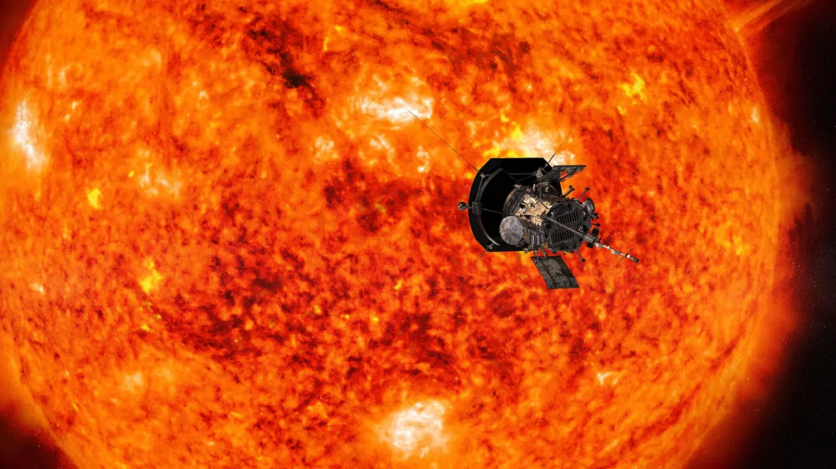NASA's Parker Solar Probe has achieved a remarkable milestone, securing its position as the fastest human-made object on record. This comes after it has made a record-breaking speed as it gets a gravitational assist from Venus to tumble closer to the sun's blazing hot surface.
On September 27, the probe soared at an astonishing 394,736 mph (635,266 km/h) in close proximity to the sun's surface, facilitated by a gravitational boost from a near encounter with Venus on August 21.

New Pinnacle in Human Engineering
This velocity eclipsed its previous record in November 2021, marking a new pinnacle in human engineering. Alongside this feat, the probe also established a fresh distance record, approaching within an unprecedented 4.51 million miles (7.26 million km) of the solar surface - an orbit closer than any spacecraft has ventured before, according to NASA.
NASA's Parker Solar Probe completed its 17th close approach to the sun on September 27, breaking its own distance record by skimming just 4.51 million miles (7.26 million kilometers) from the solar surface.
After benefiting from a gravity-assist flyby of Venus on August 21, the Parker Solar Probe achieved its close approach, known as perihelion, at 7:28 p.m. EDT.
During this phase, the probe traveled at an astonishing speed of 394,736 miles per hour (635,266 kilometers per hour) in orbit around the sun, setting yet another record.
This marked the midpoint of the probe's 17th solar encounter, which commenced on September 22 and will extend until October 3. NASA noted that the spacecraft entered this encounter in optimal condition, with all systems functioning within normal parameters.
On October 1, the Parker Solar Probe relayed a continuous stream of telemetry, providing status updates to mission operators at the Johns Hopkins Applied Physics Laboratory in Laurel, Maryland, where the spacecraft was both conceived and constructed.
From October 4 to 19, the probe will transmit a bunch of scientific data from the encounter. This dataset will predominantly encompass the characteristics, composition, and dynamics of the solar wind as it emanates from the sun, destined for analysis back on Earth.
One of the Most Powerful CMEs
In recent news, the probe also achieved a significant milestone on September 5, when it navigated through one of the most powerful coronal mass ejections (CMEs) ever documented.
CMEs are colossal eruptions from the sun's outer atmosphere, the corona, and play a pivotal role in shaping space weather, which can pose threats to satellites, disrupt communication and navigation systems, and even disrupt terrestrial power grids.
NASA noted that understanding the dynamics of CMEs with interplanetary dust could significantly enhance the accuracy of predictions about their transit from the Sun to Earth and when they might impact our planet.
Guillermo Stenborg, an astrophysicist at the Johns Hopkins Applied Physics Laboratory, emphasized the significance of this observation, saying, "These interactions between CMEs and dust were theorized two decades ago, but had not been observed until Parker Solar Probe viewed a CME act like a vacuum cleaner, clearing the dust out of its path."
Related Article : 'Portrait of the Sun:' World's Most Powerful Solar Telescope Snaps The Face of the Sun in Crisp Detail

ⓒ 2026 TECHTIMES.com All rights reserved. Do not reproduce without permission.




